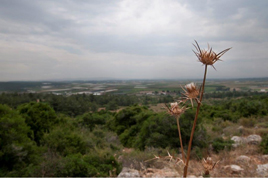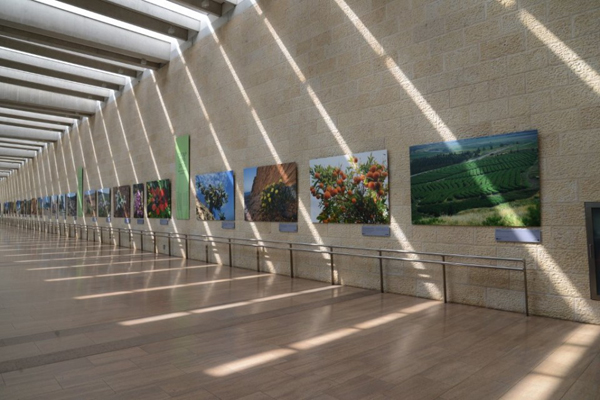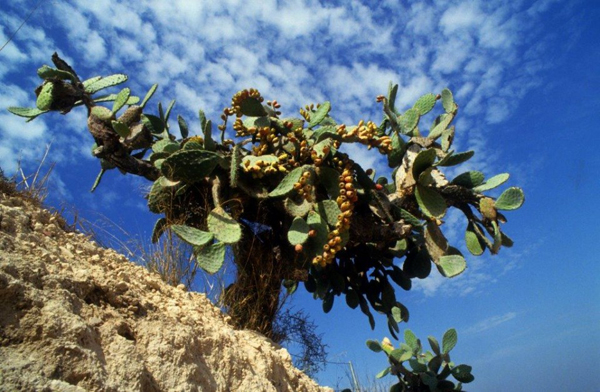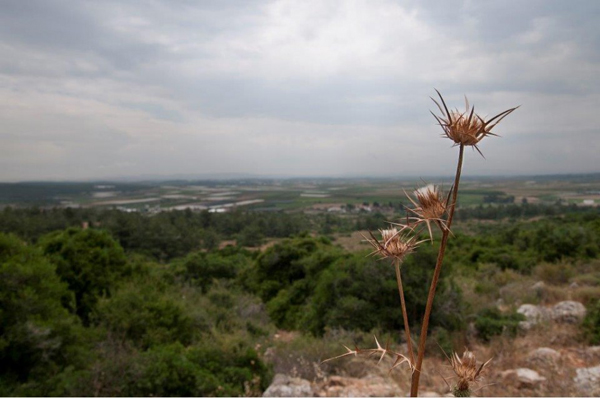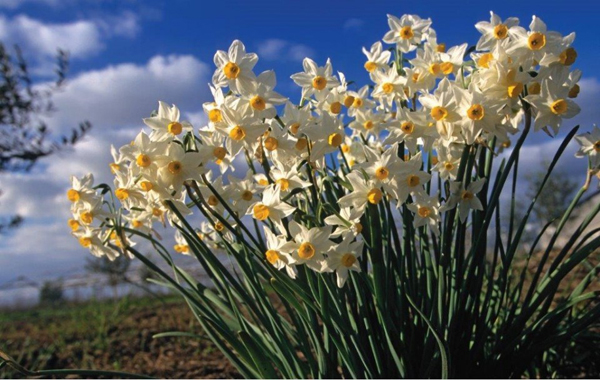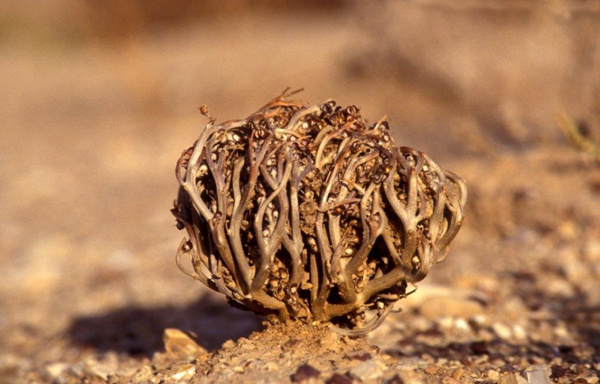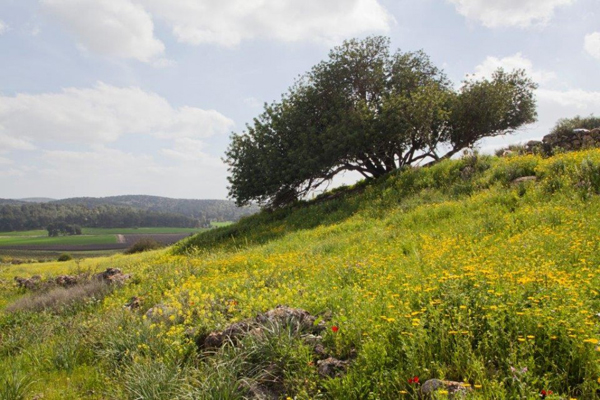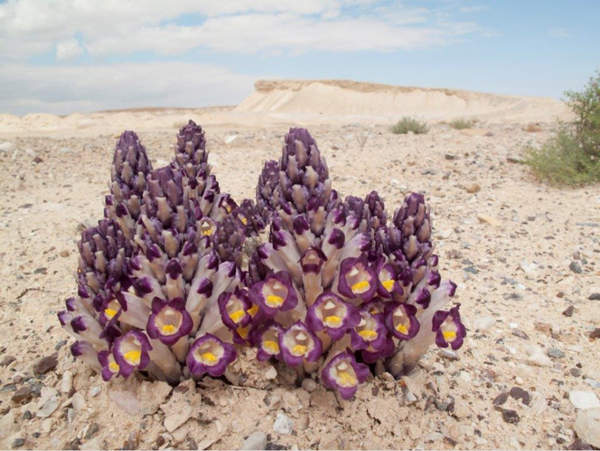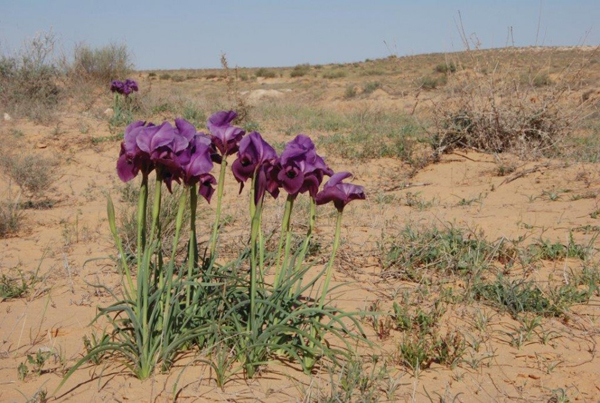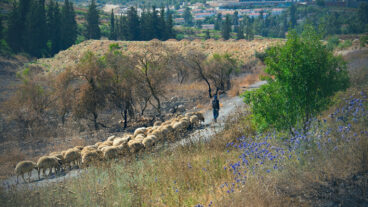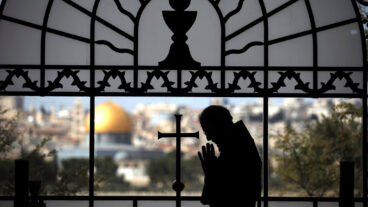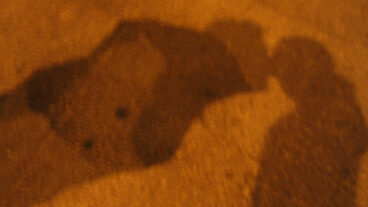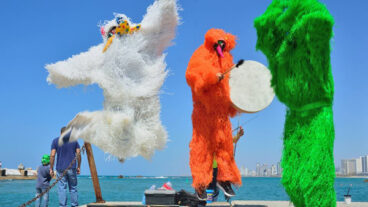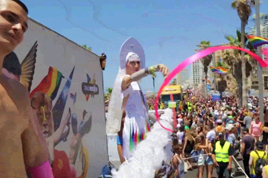Historically, the Passover holiday was celebrated by making a pilgrimage to the Temple Mount in Jerusalem. Israelis today continue that tradition by leaving town and going on vacation abroad. As they embark upon their modern-day exodus at Ben-Gurion International Airport, they’ll pass by a photo exhibition of large-format nature photographs, entitled Beautiful Israel in Green, presented by the Council for a Beautiful Israel.
Botanists define two major phyto-geographical regions in Israel. These areas are characterized by their flora and in fact correspond to the climate regions found in Israel: the Mediterranean zone and the Sahara-Arabian (desert) region. Beyond these two areas, there are other plants from other origins; namely Sudanian plants of East African of subtropical origin, and Irano-Turanian plants from the cold desert of Iran and Central Asia.
Curators Gilat Elkeslasi Nadivi, Vera Pilpoul, Orit Lutringer divided the exhibition accordingly into four sections according to the origin of the plants: the Mediterranean, deserts, plants found exclusively in Israel and those brought by man from remote places.
For example, the Prickly Pear — known here as the “sabra” which has come to represent the typical Israel who is prickly on the outside, sweet on the inside — was actually brought to the country from the deserts of North America to serve as a live fence for marking fields, as well as providing an edible fruit.
Prickly Pear. Photograph: Eyal Bartov, Tzipori, Lower Galilee
The curators state. “There are over 2,500 species in Israel, 2,300 of which are native Israeli plants and over 200 were brought here by humans. More than 3,000 additional ornamental, agricultural and forestry plants flourish within our boundaries. This large diversity is quite rare in a territory the size of the State of Israel.
Syrian Thistle. Photograph: Ayelet Noyfeld, Carmel Region
Common Narcissus. Photograph: Eyal Bartov, Sde Yitzchak, East Sharon District
True Rose of Jericho. Photograph: Eyal Bartov, Judaean Desert
“The amazing variety of wild vegetation found in Israel is due to its geographic location; where Asia, Africa and Europe meet and two climate zones connect – the Mediterranean zone and the Sahara-Arabian desert. Furthermore, there are several local factors that create unique areas that provide special habitats for the growth of certain plants. It is also worth mentioning, that over the years climate changes have empowered some foreign wild plants to migrate naturally, take root and thrive in Israel”.
The Carob Tree is a possible migrant species. It is not mentioned in the Old Testament and might have been brought to the region later on by nomads from the South.
Carob Tree. Photograph: Ori Fragman-Sapir, Amatzia, Lachish District
“Half of Israel וs covered by a sprawling desert… a region characterized by a long, hot, dry summer, and a short winter with little rainfall, averaging less than 200mm a year. Two additional characteristics associated with the desert are strong solar radiation and random volatile rainstorms.
“In general, there is a small variety of plants found in the desert. Each plant has the remarkable ability to adjust and survive the long dry spells. They are equipped with a number of unique mechanisms that enable them to survive in harsh conditions and retain water”.
One such perennial is the Spiny Zilla, a plant that grows in the extreme desert and is covered with a waxy layer that reduces water loss.
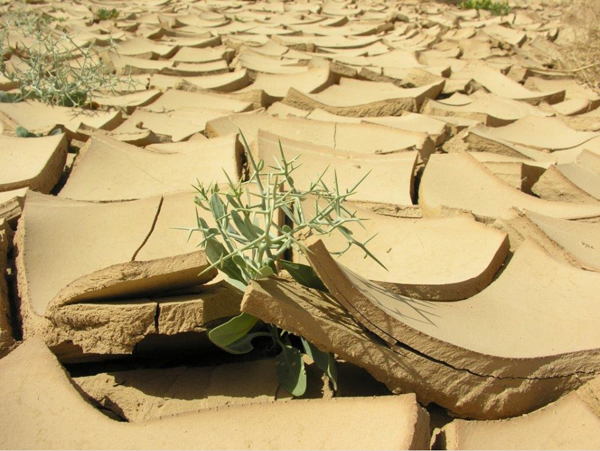
Spiny Zilla. Photograph: Mori Chen, north of Eilat
The Violet Cistanche is a rare parasite plant with no leaves. Instead, its roots attach themselves to neighboring plants and siphon nutrition from them.
Violet Cistanche. Photograph: Ori Fragman-Sapir, Arava Valley
“There are dozens of plants that grow only in Israel or in its immediate surroundings… A large group of endemic plants can be found on the coastal plain. This is the most congested area in the country, a region where nature is exposed and vulnerable… Rare endemic species are currently grown in most Israeli botanical gardens and other smaller shelter gardens… to ensure the viability of this plant’s populations in the face of the pressures presented by increased development. Other of these species have become successful garden plants in Israel and abroad”.
Southern Israel’s largest Iris, Mary’s Iris, characterized by beautiful violet flowers, grows and blooms only in rainy years in the sands of the western Negev.
Mary’s Iris. Photograph: Ori Fragman-Sapir, Shunra Sands, West Negev
If you don’t find yourself at Ben Gurion Airport in the near future, you can find the full exhibition images and catalog text online at the Council for a Beautiful Israel website. The exhibition is based on Beautiful Israel in Green, an album published by The Council for a Beautiful Israel, with works by photographers Eyal Bartov, Ori Fragman-Sapir, Mori Chen, Ayelet Noyfeld, Ilia Shalmayev and Lior Almagor.




